Bill Laswell’s “Means of Deliverance” — Making a Groundbreaking Solo Bass Record
WEST ORANGE, NJ: It makes perfect sense that Bill Laswell’s place is on the bass.
A mostly underground producer who occasionally surfaces in the mainstream, Laswell has built up what easily stands as one of the most diversified client lists in modern music. Over his career as a producer, bassist, and record label owner, his eccentrically successful track record covers everyone from Mick Jagger, Iggy Pop, Public Image Ltd, and Laurie Anderson, to Brian Eno, Bootsy Collins, Motorhead, Sting, and Carlos Santana.
And it was Laswell who co-wrote Herbie Hancock’s 1983 smash “Rock-It”, the unforgettable single that injected turntablism into the mainstream.
A man from the Midwest who became an essential NYC resource when he moved here in the 1970’s, Laswell has somehow managed to remain as mysterious as he is ubiquitous. Which brings us back to that bass – an essential element in Western music that can also go largely unnoticed if you don’t know where to listen.
Laswell has finally put the spotlight front and center on his four-stringed muse with the newly released Means of Deliverance, which stands as the first ever acoustic solo bass recording from this quirky maestro. Simultaneously introspective, surprising, and electrifying, Deliverance is a rare record in that it changes a little with each listening – you may not be able to hum along to this album, but once experienced, you just might wonder how you ever lived without it.
For Laswell, who lives in NYC and creates at his private facility, Orange Music Studio in West Orange, NJ, Deliverance proved indispensable as soon as he began recording it. “Once you start something like this, it becomes a musical statement and an obsessive endeavor,” confirms Laswell, who speaks in the quiet, even tones you would expect of a musical Zen master. “You have to be fairly obsessed with what you do – otherwise you’re wasting other people’s time.”
While Laswell has made a big name for himself over the decades, it’s been primarily via collaborations – with artists including Afrika Bambaataa, John Lydon, and even William S. Boroughs – that his reputation has spread. But he acknowledges that there’s something about the concept of a solo recording that holds its own appeal.
“It’s your own statement – there’s no conversation with anyone else,” he says of the artistic exposure that accompanies a solo performance. “You’re expressing where you are at that moment, which makes it challenging to the artist, and probably challenging for the listener.
“The other thing is that you can’t hide: If you’re with musicians that are very adept and virtuostic you can blend in with that, but in a solo situation there’s no hiding in the shadows. Whatever happens with a solo, it’s got to be very honest when it comes to the surface.”
Recording Bass at Orange Music
A cornerstone of Deliverance was Laswell’s instrument, a Warwick Alien fretless four-string acoustic bass guitar, which helped inspire the project. Even Laswell, with his deep musical knowledge, was unable to identify another solo bass guitar record in existence, meaning that he’d be 100% blazing his own trail as he tracked at Orange Music.
As an instrument with an especially limited frequency, especially with Laswell’s tendency to play in its lower register, recording solo bass comes with its own inherent set of challenges. First, however, Laswell, had to generate and perform the ideas for songs like the tense and haunting “Ouroboros”, the mountainous ramblings of “Buhala,” the medieval lullaby of “Aeon,” and the twist of “In Falling Light”, with its bell-like highs that expand the listener’s expectations of bass.
Winding together influences ranging from the East African lands of Ethiopia and Mali, to the blues to country and back down to South Africa, the result is an entrancing experience of bass that reveals something new every time.
“Music should come out of your life experience,” Laswell observes. “You should be able to translate that, and the more experience you have, the more you can build up your vocabulary, your language, and your improvised repertoire. And then the longer and the more interesting the stories become.
“When you’re playing these performances in the studio, you lose the other side of it,” he continues. “You’re not thinking about the recording environment, or the microphone. In terms of the technical, my approach was to play ideas and make sure it sounds good when you play it back.”
Towards that end, Laswell had the assistance of his longtime engineers, Robert Musso and James Dellatacoma. Working together at Orange Music – a 1960’s-era facility now owned by Laswell that had recorded the likes of Frankie Valli, Jethro Tull, and Humble Pie back in the day – the three-piece team prepared for the particular needs of a solo bass recording.
First, additional soundproofing was added to Orange Music’s spacious live room to minimize drive-by noise from the suburban streets outside. From there, they were ready to plug into Laswell’s go-to connection: an Aguilar tube DI. “We use that on pretty much anything that Bill plays,” Dellatacoma says. “It’s full, it’s loud, it’s warm, and it sounds great on bass. We also used a Neumann U 47, and we had just gotten these Cascade Fat Head ribbon mics, so I threw them up there to try it.
“I put the ribbon close to the bridge area of the bass, which is not an acoustic upright – it’s an acoustic electric which is played just like you would an acoustic guitar. I placed it about a foot away. I don’t know that it’s ideal, but when I mic a player on an instrument like that, I’m looking to get as close to the sound source as possible without getting in the way of how he’ll play the instrument in his hands. Somewhere between the bridge and the sound hole was where most of the sound was going to come from, but I also knew I was going to use a second mic.
“The Neumann was placed about a foot-and-a-half away, in front of Bill and pointing at his lower chest to capture the air and the overall tone of the instrument. In conjunction with the ribbon mics and the DI, the sound came together to form the record.”
From the microphones, the signal path of the U 47 and the DI led to vintage Neve 1073 mic pres, while the ribbon went through a Focusrite ISA828. “We wanted this to be a really clean album,” Dellatacoma explains. “We have a Neve 1081 mic pre that we’ll use with the ribbon, but if we turn the gain up too much we get noise. As the Focusrite gets louder, it’s a much cleaner signal.”
After the mic pres, all audio went straight into Orange Music’s Pro Tools HD3 system (running version 8), with a choice of Apogee or Burl converters, recording at 48 kHz/24-bit. “The bottom end was rich in this Warwick bass, and it was important that we capture that,” says Dellatacoma. “Knowing that this would be a solo bass record, with no other instruments, we had to capture as much low end as possible. This is a Bill Laswell record, and he’s known for releasing records that are full in the frequency spectrum – not mud, but low-end content that will sound good and feel good.”
Mixing and Mastering for the Low End
For each song, Laswell generally took a three-tiered approach, first recording a rhythmic riff, followed by an additional lead track playing off of the rhythms, and capped off by an ambience track played with an ebow or slide to create a drone. While some songs are spare, like the focused virtuoso of “Bahala”, others are much more dense, with as many as six tracks of bass happening.
While a good deal of the audiophile-quality recording of Deliverance can be attributed to the carefully crafted recording path, the mix also helped Laswell and his engineering team to make the most of it. At Orange Music, mixing does not take place in the control room adjacent to the live room. Instead, the faders are moved in a separate, dedicated room on the top floor of the studio (picture a Southwestern cabin with mirrors on the ceiling), where a Yamaha DM1000 32-input digital mixer and a Neve 8816 16-channel summing mixer are available.
“For this particular mix,” Dellatacoma says, “we wanted the cleanest signal path possible, so we just used the DM1000, because the 8816 is known for adding that classic Neve transformer sound. We edited as we went along. If parts were good they were kept, and if not they were muted. Bill’s style of mixing is very manual: He has his hands on the faders, without a lot of automation. So in Bill’s mind, if things are colliding or interfering, he knows what volume moves will work.”
Not surprisingly, compression and other processing were minimized for this naturalistic recording. “Rob’s theory was, ‘Let’s use as little processing as possible’, because we wanted a real clean, defined sound for this record,” says Dellatacoma. “We didn’t use a lot of compression, and we certainly didn’t use a lot of outboard gear, in order to minimize electronic noise. Any compression that was used was in plugin form, like the MCDSP Compression Bank, and the Fairchild 660 Bomb Factory plugin, but that’s heavy – when Bill is playing a dub-style bass line, that kind of compressor sounds great.”
After Orange Music, the tracks made a crucial stop at TurtleTone Studio for mastering by Michael Fossenkemper.
“He does all of Bill’s mastering and he knows what a Bill Laswell record is supposed to sound like,” Dellatacoma says. “Whether it’s a full band or solo bass, it will have a rich low end that’s not thumpy or foggy – its defined low end. The low end is the anchor of Bill’s records, and Michael knows not to roll off too much.”
Wisdom of the Basses
Typically, Bill Laswell is not sitting still. Although the record was just released on his Innerythmic label, he’s already got his sights set on something new: a series of live musical performances set to a one-hour edit of the classic mind-blow film Koyaanasqatsi, originally scored by Philip Glass but now being reimagined by Laswell with the permission of director Godfrey Reggio.
Looking back at the landmark achievement that is Means of Deliverance, Laswell is sure of at least one thing. “What’s definite is that I can’t repeat that again!” he states. “It’s documented. So I have to move on and take it as a step that I’m moving forward with.
“I haven’t got a particular philosophy about this period or this work, but I hope it translates, because this is some real life experience moving out of the speakers: It’s a simple story that can be interpreted, reinterpreted, and carried on and on.”
— David Weiss
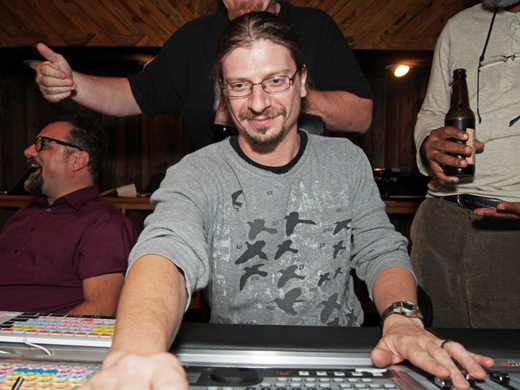
Your friendly neighborhood engineer: James Dellatacoma at Orange Music Sound Studio (photo by Avraham Bank)
Please note: When you buy products through links on this page, we may earn an affiliate commission.







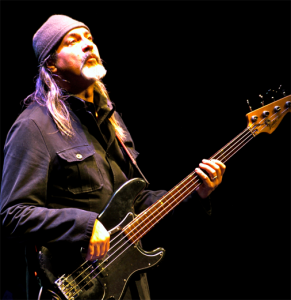
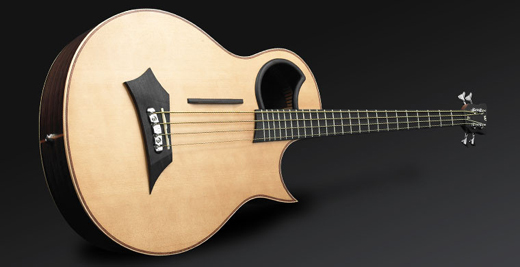
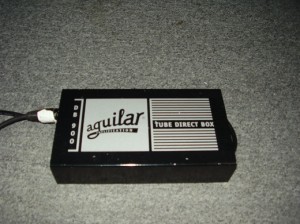
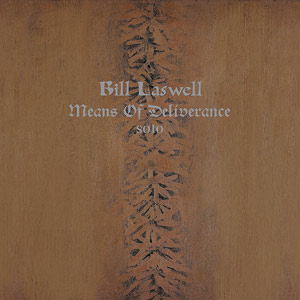
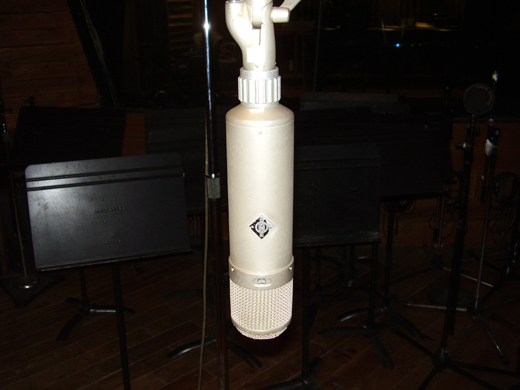
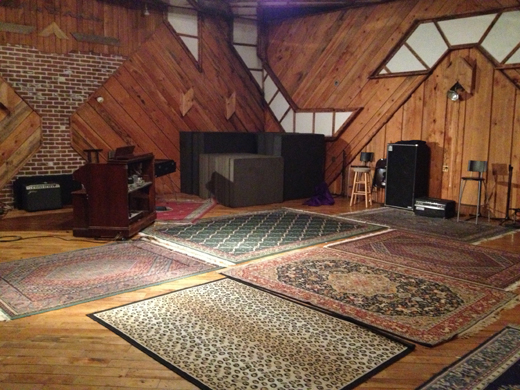

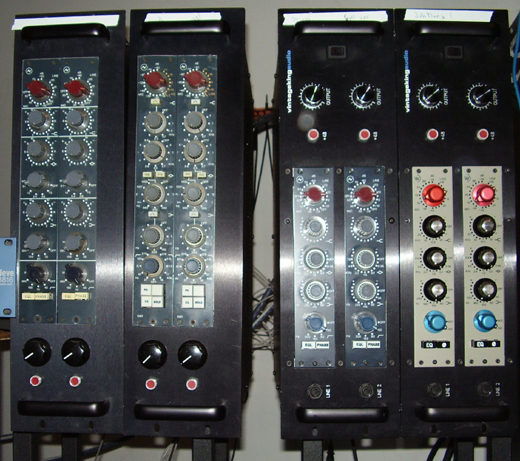
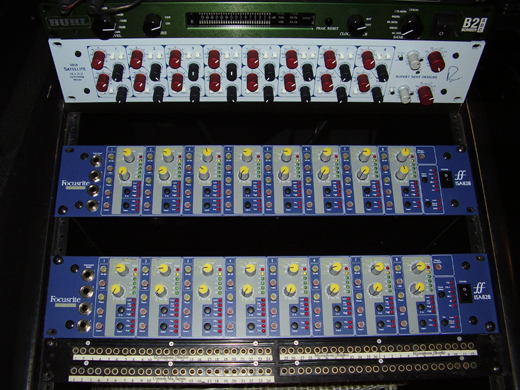
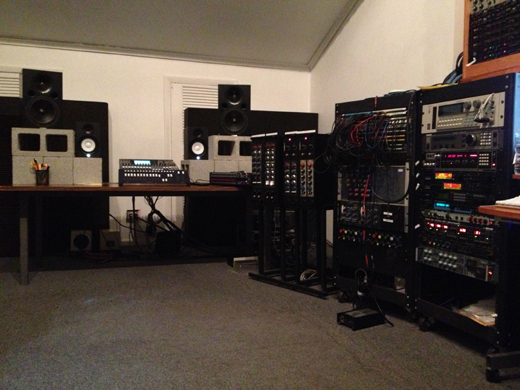
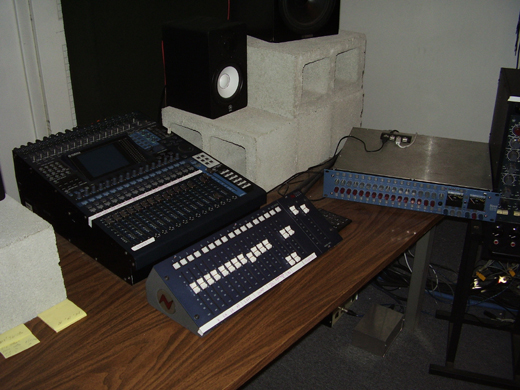
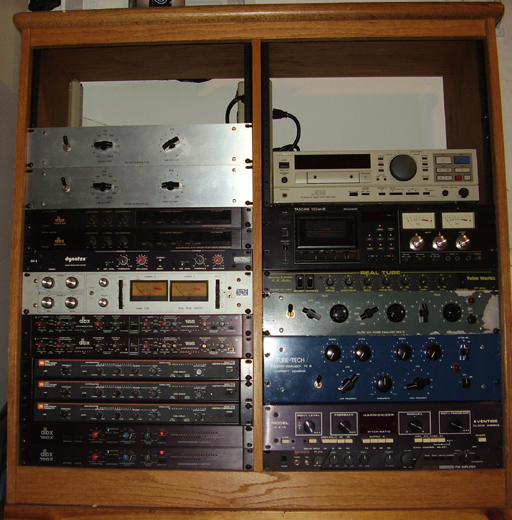
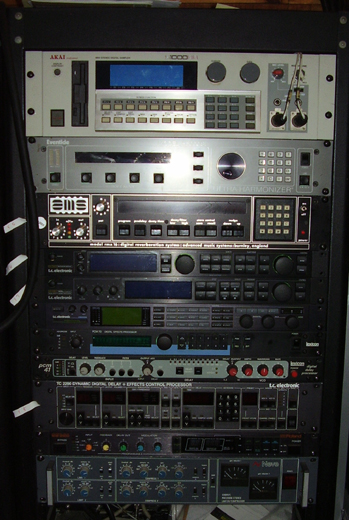
Ernie Jackson
October 29, 2012 at 7:56 am (12 years ago)Awesome article!!! Thanks for writing. Please fix the grammatical error in the first sentence.
David
October 29, 2012 at 3:48 pm (12 years ago)Ernie, thanks! I must be a bad editor, I can’t tell what the grammatical error is. Let me know, thanks again!
Jake
October 29, 2012 at 6:01 pm (12 years ago)2nd sentence, “A mostly underground a producer who occasionally surfaces in the mainstream…”
JAsonB
October 30, 2012 at 5:09 pm (12 years ago)“…could not identify another solo bass guitar record in existence”? really?
ej
October 31, 2012 at 1:17 pm (12 years ago)4th word.
m3k
November 8, 2012 at 10:55 pm (12 years ago)so the singing on track 5 came from the bass too?
Sid Mills
November 8, 2012 at 11:40 pm (12 years ago)Nice work Mr. laswell…. been a fan for many years…. do your thing..
Sidney Mills (Keyboards)
Steel Pulse…
Paul
November 9, 2012 at 4:19 am (12 years ago)Awesome to know that Laswell has, at last, issued a solo bass recording and very cool to hear him talk about it and, just as cool to see pics of the studio where so much incredible music has been made. Great article
FactCheckin
December 4, 2012 at 8:28 am (12 years ago)There are solo bass albums by some world-renowned bassists,
including:
-Barre Phillips
-Dave Holland
-Ron Carter
-Malachi Favors
-Eberhard Weber
-William Parker
-Vitold Rek
-Henry Grimes
ApathyNihilism
May 24, 2014 at 2:36 pm (11 years ago)I supposed describing him as “mostly underwater” would have minimized mixed metaphors.
Bodaciousness
November 15, 2014 at 6:37 pm (10 years ago)It does say, …”which stands as the first ever acoustic solo bass recording from this quirky maestro.” Doesn’t say it’s the only one ever by anyone.